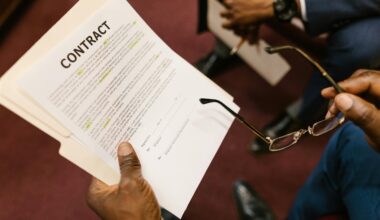Do you know that thousands of people have successfully navigated bankruptcy law without the help of an attorney? Picture this: Sarah, a hardworking single mom, has been struggling with mounting debts for months. She tried negotiating with creditors, but the calls kept coming, and the bills piled up. Eventually, the weight of it all became unbearable. One day, after another sleepless night worrying about how she’d keep the lights on and feed her kids, Sarah had an epiphany. What if there was a way out—without relying on expensive lawyers or drowning in debt for years?
A quick search led her to a revelation: you don’t have to hire a lawyer to file for bankruptcy. Sure, it’s a bit of a challenge, but not impossible. Thousands of people like Sarah have successfully navigated bankruptcy without the help of an attorney.
If you find yourself in a similar financial bind, wondering if bankruptcy is the way to go but whether you can afford legal fees, this guide is for you. In 2025, filing for bankruptcy will become more accessible than ever, and you can take control of your financial future without a lawyer’s help. Let’s dive into the nine essential steps that will empower you to file for bankruptcy independently.
Advertisements
Understand the Types of Bankruptcy Law Available to You
The first step in filing for bankruptcy is understanding the two most common types: Chapter 7 and Chapter 13. Most individuals will encounter these types of bankruptcy.
Chapter 7 Bankruptcy: This type of bankruptcy is often referred to as “liquidation” bankruptcy. It allows you to discharge most of your unsecured debts, such as credit card bills and medical expenses, in exchange for selling off certain non-exempt assets. However, you must meet certain income and asset criteria to qualify for Chapter 7.
Chapter 13 Bankruptcy: Also known as a “reorganization” bankruptcy, this option allows you to keep your assets, such as your home or car while repaying a portion of your debts over a 3- to 5-year period. It’s a good option if you have a steady income but can’t fully pay your debts.
Advertisements
The key takeaway? Chapter 7 is quicker and may result in a complete discharge of debts, while Chapter 13 gives you more time to pay but can be more complex.
Illustration: Imagine Chapter 7 as a fresh start where most of your debts are wiped clean—like hitting the reset button. Chapter 13, however, is like signing up for a financial workout plan, where you commit to paying off your debts gradually, but you don’t lose everything.
Assess Whether Bankruptcy Is Right for You
Before diving into the filing process, it’s crucial to determine whether bankruptcy is your best option. Bankruptcy is a powerful tool for eliminating debt, but it’s not always the best fit for everyone. If you have a steady income and can make a payment plan, Chapter 13 might be more viable. However, if you are overwhelmed by unsecured debts and have few assets, Chapter 7 might be a better solution.
Here’s how to assess
- Are your debts primarily credit card balances, medical bills, or personal loans?
- Have you struggled to make at least the minimum payments for several months?
- Do you have enough income to pay off some of your debts over time, or is your income needed to make even minimal payments?
If you answered “yes” to these questions, bankruptcy could be a viable option. However, if your primary debts are mortgages or car loans, or if you have valuable assets you wish to protect, Chapter 13 may be better.
Gather the Necessary Documentation
The filing process can be daunting, but it’s all about preparation. You’ll need to gather key documents to complete your bankruptcy petition. Here’s what you’ll need:
- Income and Expense Records: Pay stubs, tax returns, bank statements, and proof of any additional income sources.
- Debt Information: A list of all your creditors, the amounts owed, and the types of debts (e.g., credit cards, loans, medical bills).
- Asset Information: A list of your property, including real estate, vehicles, and valuables. You will also need to know which assets are exempt in your state.
Pro tip: Be thorough when listing all debts and assets. Omitting information or being dishonest can result in your bankruptcy being denied.
Illustration: Consider this step like preparing for a big exam—gathering all your notes (in this case, financial records) ensures you won’t miss any critical details.
Complete the Bankruptcy Forms
This is where the process gets more technical. The next step is to fill out the bankruptcy petition and related forms. The forms for Chapter 7 and Chapter 13 will differ slightly, but they generally ask for the same information: your income, debts, assets, and living expenses.
You can find these forms online at your local bankruptcy court’s website or through a bankruptcy filing service. You can also use e-filing services, which streamline the process.
While this part may feel overwhelming, remember that resources are available to help you complete the forms, including bankruptcy guides and online tools that simplify the paperwork.
Pay the Filing Fee
Filing for bankruptcy is not free, but it’s relatively inexpensive compared to hiring a lawyer. As of 2025, the filing fee for Chapter 7 bankruptcy is $338; for Chapter 13 bankruptcy, it’s $313. If you can’t afford the filing fee, you can request a fee waiver or pay it in installments, depending on your financial situation.
Tip: If you qualify for Chapter 7, you can file for bankruptcy without paying the full fee upfront. But be sure to check the specifics for your jurisdiction, as rules can vary.
File Your Bankruptcy Petition with the Court
Once your forms are completed and you’ve gathered all the necessary documentation, it’s time to file your bankruptcy petition with the court. This is where the magic happens—filing officially starts the bankruptcy process.
The court will assign you a bankruptcy trustee to oversee the process and review your petition for completeness. At this point, an automatic stay goes into effect. This means creditors must stop collection efforts, including phone calls, lawsuits, and wage garnishments. It’s a relief and a reminder that you’ve officially entered the legal process.
Illustration: Filing your petition is like turning in your homework—now it’s in the hands of the court. And just like waiting for exam results, you must be patient as the process unfolds.
Attend the 341 Meeting of Creditors
After filing, you’ll be required to attend the 341 meeting of creditors (also known as the meeting of the creditors’ hearing). This is a meeting with the bankruptcy trustee and any creditors who appear. Don’t panic—this is usually a reasonably low-key meeting where the trustee will ask basic questions about your financial situation.
The most important thing here is to be honest. The trustee will verify the information you submitted in your petition, and they’ll ask questions to ensure you’re following the legal guidelines. If you’re filing without a lawyer, prepare thoroughly, but don’t be afraid to ask questions if you don’t understand something during the meeting.
Complete Financial Management Courses
Before your bankruptcy can be discharged, you must complete a financial management course. This is a requirement for both Chapter 7 and Chapter 13 bankruptcy filers and is designed to help you better manage your finances in the future.
The course is typically offered online and takes a few hours to complete. Once you’ve finished the course, you must submit your completion certificate to the court. Failure to complete this step could delay your discharge.
Wait for Your Bankruptcy Discharge
Once all steps are complete, the final stage is the discharge of your debts. In a Chapter 7 bankruptcy, most of your unsecured debts will be erased, typically within a few months. For Chapter 13, your debts will be reduced based on the repayment plan, and any remaining balances may be forgiven once you’ve completed the plan.
Conclusion: Empowering Yourself Through Knowledge
Filing for bankruptcy without a lawyer may initially seem intimidating, but it is possible with the proper knowledge and resources. The key is understanding the process, being thorough with documentation, and being proactive throughout each step. While lawyers can undoubtedly offer help, many individuals can—and do—successfully navigate the bankruptcy process independently.
By following these nine steps, you can take control of your financial future and regain your peace of mind. Like Sarah, you, too, can emerge from financial distress with a fresh start. And remember, you don’t have to face it alone—resources and guides are out there to help you through every stage. Take a deep breath, get organized, and move forward with confidence. Your financial freedom is within reach.
Advertisements






